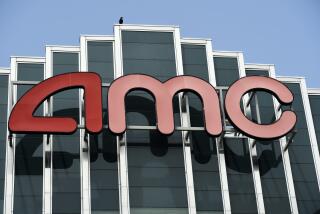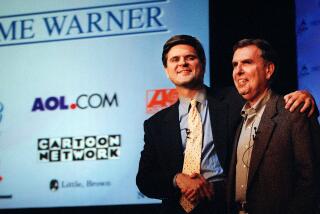Ex-Owner Seeks to Buy Back AME : Entertainment: Andrew M. McIntyre has offered $25 million for the debt-saddled post-production company, which he founded with $90,000.
- Share via
Andrew M. McIntyre, who built AME Inc. into Hollywood’s biggest post-production house and then netted a fortune when AME was purchased for $57 million in 1989, has offered to buy back the company for only $25 million, The Times has learned.
McIntyre’s bid is significantly less than the purchase price two years ago because AME has struggled financially and suffered management turmoil ever since the leveraged buyout, in which an investor group bought the company with mostly borrowed cash, according to informed sources.
The group also had assumed about $42 million of existing AME long-term debt. But the sources said the deal was too leveraged, because AME has been choking on the debt despite being led for the past 18 months by former Wall Street banker and movie mogul Dennis C. Stanfill, who ran 20th Century Fox Film Corp. in the 1970s.
Stanfill, who is AME’s chairman, and the company’s other directors ignored McIntyre’s bid, the sources said. But the Burbank-based company is on the auction block and has hired the investment firm Furman Selz Inc. in New York to explore a sale, they said.
“There’s been an increase in costs, a decline in revenue and a loss of client confidence” that have eroded AME’s business, one source said. The company “is not hitting the projections” of revenue that were used for making the buyout loans in the first place, the source added.
McIntyre, AME and their lawyers all declined comment.
But McIntyre, in an apparent attempt to clear the way for him to make a renewed offer for AME, last week sued the company in Los Angeles Superior Court, claiming that a non-compete agreement he signed when he left AME is no longer valid.
His suit, if successful, could make it harder for AME to be sold to anyone but him. If McIntyre, 46, is allowed to again compete in the post-production business, other suitors might not be willing to buy the already troubled company, the sources said.
As a post-production concern, AME performs various services for transferring filmed movies and television shows to the videocassette, syndication and network-TV formats so that they can be mass distributed. It also provides computer animation, graphics and conversion of videotapes to the electronic standards used in foreign countries.
McIntyre started AME (short for Andrew McIntyre Enterprises) with a $90,000 investment in 1980. He took the company public in 1987 and, with the help of acquisitions, built its annual revenue to more than $50 million.
In 1989, McIntyre offered to buy the 56% of AME he didn’t already own from the public, but later withdrew the bid because he couldn’t get financing on terms he wanted. He and AME’s other stockholders then agreed to sell the company to the investor group, which was led by New York investor Lawrence J. Berkowitz. McIntyre got $22 million for his stake in the company.
Most of the cash for the buyout was borrowed from First National Bank of Boston, a unit of Bank of Boston Corp. Citicorp Capital Investors Ltd. and Westinghouse Electric Corp. also were lenders on the deal.
Because AME is now privately held, it does not publish its financial results. But the sources say AME almost immediately fell behind on its debt payments, and within a year Berkowitz and Stanfill were clashing over the company’s direction. Stanfill was then an AME director and the company’s point man for dealing with the banks, the sources said.
Berkowitz quit as chairman in June, 1990. Three months later AME’s president, Larry G. Kingen, also quit. By early this year, Frank Bluestein, its senior vice president for corporate marketing, also was gone. They also declined to comment or could not be reached.
McIntyre’s $25-million offer for the company does not include any assumption of AME’s debt, because most of that debt has probably been written down by First National Bank of Boston and the other lenders, sources said. First National Bank of Boston also declined to comment.
Besides the riches he earned from selling the company, McIntyre already had received more than $6 million from AME’s initial public offering two years earlier. So why would he want his old job back?
Because it’s not unusual for an entrepreneur to sell a business, become dissatisfied with its performance after he’s gone and then want the business back to set things right, the sources said.
As one put it: “His name is still on the door.”
More to Read
The biggest entertainment stories
Get our big stories about Hollywood, film, television, music, arts, culture and more right in your inbox as soon as they publish.
You may occasionally receive promotional content from the Los Angeles Times.











